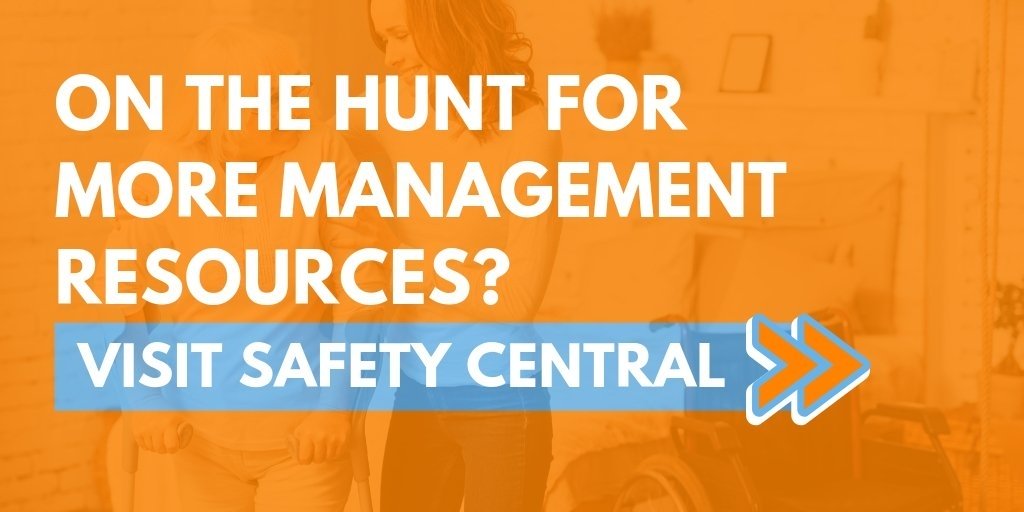Caregivers need resources to help them through the difficulties associated with their roles.
“Professional caregivers enter into someone’s life, help them through what could be their worst moments, interact with family members, and possibly spend more time with someone facing their final days than anyone else. And when they die, your job is over, and it is time to move on.”
- Patrick Arbore, Facing Death and Sorrow as Part of Work
We see the grief of loved ones when someone passes, but the grief of a caregiver is often there, too. It may be hidden and quiet, but it very much exists. An article by the New York Times shed light on the pain caregivers experience when they lose patients. Author Paula Span shares the experiences of teams who worked for years with an elderly couple who passed away within months of each other.
Day shift aide Cynthia Balkran, said, “They always tell you, ‘Don’t get too attached,’ but people do get attached. They were like grandparents.”
When you’ve built a relationship, a true bond with a client, grieving the loss of this person can be a complicated and overwhelming challenge. Although there is a level of professionalism that must be maintained, grieving the loss of a client is important.
Why does your team need to address loss?
Overall, caregivers need to address the effects of patient loss to avoid letting it accumulate and eventually cause burnout. Aside from the professional aspects of the job, it’s also important support for the basic wellbeing and emotional health of caregivers.
Elizabeth J, Clark, PhD, ACSW, MPH shares these characteristics of professional grief in “Understanding Professional Grief”:
- Professional caregivers grieve from a distance
- The effects of professional grief are hidden and subtle
- Professional losses can accumulate
- Grief may transform into emotions such as anger, anxiety, blame, helplessness and guilt
- Grief may have a chronic or delayed response
- The grief professional caregivers experience is a significant cause of burnout
Maintaining a professional balance
Understanding Professional Grief describes the delicate balance between engagement and detachment, and the necessity of ongoing self-monitoring.
If you are unable to maintain that balance, here are a few examples of what you can expect to see:
- A decrease in tolerance or sensitivity
- Inability to meet the demands of your work
- An increase in cynical feelings – one of the best indicators of burnout
- A post-traumatic stress reaction, which may include flashbacks
- Difficulty maintaining hope at work or in your personal life
We want to help you break down feelings like “I can’t be sad, I’m a professional,” in your organization. Your clients will thank you later for taking the time to ensure that staff members have the resources they need.
Here are a few actions your organization can implement to address caregiver grief:
- Maintain an open door policy
When a member of your team is suffering the effects of a loss, providing them with an outlet where they can discuss how they’re feeling is a simple way to support them. Whether it’s talking about how the loss is impacting their life or just taking a few minutes to discuss what they miss about a person, getting it out can help efoster a healthy grieving process.
- Educate staff on the signs of caregiver burnout
Self-monitoring is one of the most powerful ways that a caregiver can understand, recognize and approach burnout. Host regular training sessions that teach staff about the signs and symptoms they can expect to experience if they reach burnout, and what their next steps should be to address overload.
- Offer bereavement groups
Providing access to on and off-site bereavement groups can show your team that you’re dedicated to helping them through the tough loss they’re facing. Providing a moderator for a group of staff members and creating a meeting space helps support them in the grief process.
- Develop a list of resources
Build a comprehensive list of therapists in the area, including their phone numbers, addresses and information about their areas of expertise. Add details on different grief counseling groups that can be found in the community, when they meet and how to get into contact with the administering organizations. Create a section of the document that would house ideas regarding burnout and steps you can take to prevent getting to that point.
These tips may not be attainable for every organization, but putting even one or two to use can make a huge difference for your staff. Caregiving is an extremely rewarding career, but to ignore the emotion tied to the job is a mistake. Celebrate the high quality of care your team provides, but also support them when they’re suffering. The more individualized and valuable care you provide to your clients, the more effective your team can be. Be an outlet, welcome your team to share their experiences and work together to keep providing excellent care with compassion.
How does your caregiving organization address staff grief and burnout? Let us know by commenting below.
DISCLAIMER
The information contained in this blog post is intended for educational purposes only and is not intended to replace expert advice in connection with the topics presented. Glatfelter specifically disclaims any liability for any act or omission by any person or entity in connection with the preparation, use or implementation of plans, principles, concepts or information contained in this publication.
Glatfelter does not make any representation or warranty, expressed or implied, with respect to the results obtained by the use, adherence or implementation of the material contained in this publication. The implementation of the plans, principles, concepts or materials contained in this publication is not a guarantee that you will achieve a certain desired result. It is strongly recommended that you consult with a professional advisor, architect or other expert prior to the implementation of plans, principles, concepts or materials contained in this publication.
This blog post may contain the content of third parties and links to third party websites. Third party content and websites are owned and operated by an independent party over which Glatfelter has no control. Glatfelter makes no representation, warranty, or guarantee as to the accuracy, completeness, timeliness or reliability of any third party content. References to third party services, processes, products, or other information does not constitute or imply any endorsement, sponsorship or recommendation by Glatfelter, unless expressly stated otherwise.
Related posts
How hospices can recruit and retain volunteers.
How you can help protect your most important asset: your people, and how to help them set up their insurance benefits so that they reflect their wishes.
8 Ways to Help Protect Your Healthcare Organization from a Cybersecurity Attack




.png?height=300&name=Glatfelter%20Team%20-%20Blog%20-%20Author%20(1).png)




Submit a Comment